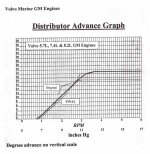Magus Three Six
New member
I have a 1989 Trojan 321 Sedan with gas in the oil. A little history about boat. Boat sat wrapped for 3 years with 180 gallons of bad fuel. Pumped out fuel and put 2 large bottles of Seafoam into each tank prior to filling with new marine gas. Rebult carbs in July 2014. Changed fuel filters on both engines.
Problems:
1. Gas in oil. Both engines. (I can lite the oil on fire)
2. Port engine wouldn't initially go over 1800 rpms until I changed out plugs. Then it ran great for awhile but then experienced the same issue. All plugs removed and are free of oil and just have black soot on them.
3. No problems with the Starboard engine other than gas in the oil.
Boat sat for 3 years. Could the fuel pumps be bad? Carb float issues? Anti-siphon valves?
Where should I go first with these problems?
Problems:
1. Gas in oil. Both engines. (I can lite the oil on fire)
2. Port engine wouldn't initially go over 1800 rpms until I changed out plugs. Then it ran great for awhile but then experienced the same issue. All plugs removed and are free of oil and just have black soot on them.
3. No problems with the Starboard engine other than gas in the oil.
Boat sat for 3 years. Could the fuel pumps be bad? Carb float issues? Anti-siphon valves?
Where should I go first with these problems?


